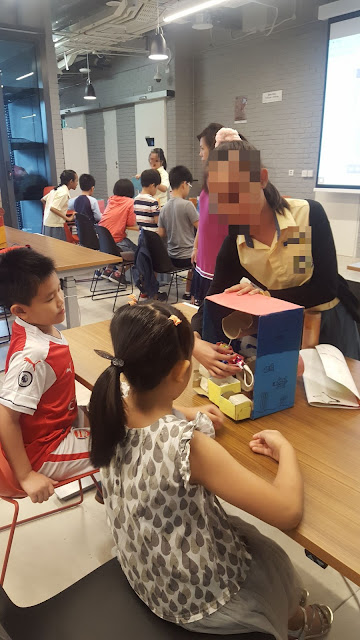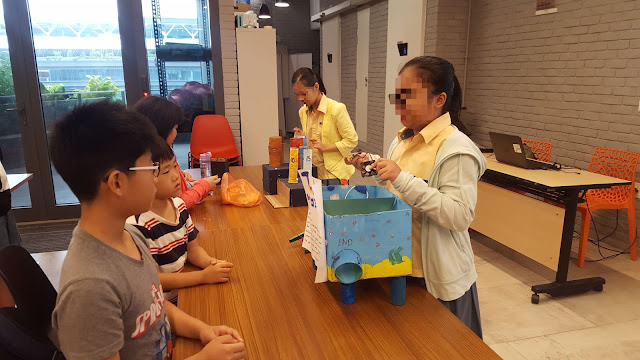Hi! we are excited to participate in this year's SYF. The theme for 2021 is Artist & Technology. In class, we begin with some discussions first to grasp students' understanding about the theme. I've prepared some robot printouts in advance so the children can practise drawing in their sketchbooks. I encourage them to mix and match the robot parts so their drawings do not appear identical to another child's.
This is one strategy to allow children to build confidence in artmaking. If I were to just say use your imagination to draw, I know there will be children who will be stumped in making their first mark. Besides, to fill up the sheer size of their A3-size sketchbook page with drawings is a challenge if you lack stamina in drawing. Because art classes are bounded by time, it is also no excuse for me to say my students took too long to think and therefore they cannot complete the work. Showing them some ideas and simple line work can help them to be more self-directed so that they don't have to keep approaching me to seek approval.
In 2016, I visited the Big Bang Data in ArtScience Museum, Singapore. The show must have left a lasting impression because I saw a statue of Neil Harbisson and of course a lot of others. Neil is the world's first officially recognised cyborg and he had an antenna implanted in his skull 🤯😱. Watch his TEDtalk here.


















































